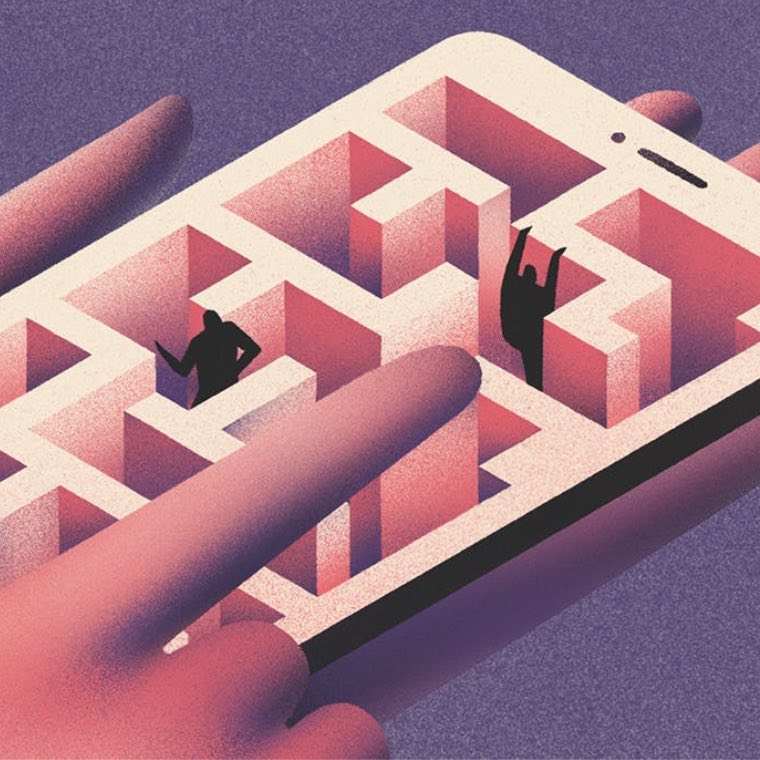
Culture
What’s next for non-fungible tokens?
July 2021NFTs, or Non-Fungible Tokens have skyrocketed in value and popularity since they first appeared on the cryptocurrency scene in 2012. Especially in the art world, with crypto spending exploding since 2018 and the high-profile auctioning of NFT artworks stealing headlines across the globe. But with the weekly trade volume of NFTs peaking in late February, at just under $200 million dollars, this crypto phenomenon is now on the downswing. By June, it dropped to around $35 million, with the number of people using NFT marketplaces falling from 650,000 to 128,000 in the same period. Could this be goodbye to non-fungible tokenomics? Or might these uniquely encoded virtual assets bounce back? In this article we look back at what NFTs are and where they sprang from, and consider where the NFT future might be headed.
“Could this be goodbye to non-fungible tokenomics? Or might these uniquely encoded virtual assets bounce back?”
The NFT gold rush
Just to recap for anyone still not familiar with these virtual certificates of ownership, an NFT is an asset that can be bought with cryptocurrency, but it’s more covetable than your run-of-the-mill crypto coin. Why? Because it stores extra digital information, be that in the form of an acclaimed artwork, a coveted game ticket, a limited edition sneaker design, an obscure domain name, a fantasy football trading card, an entire album made by Kings of Leon, or even, as was the case recently, a $92,000 sock design.
Since November 2017,a whopping $174 million has been spent on NFTs, and much of that has come from sales in auction of art and music. These include a digital-only collage artwork by American artist Beepl, sold at Christie's for $69 million, a collection of works by crypto artist Pak, which fetched $17 million over three days at Sotheby’s, and $6 million worth of digital video pieces, sold by music artist Grimes in a short-notice online auction for $7,500 each.
“Since November 2017, a whopping $174 million has been spent on NFTs, and much of that has come from sales in auction of art and music.”
Just an “overhang” in crypto assets?
At first, it seemed NFTs came packed with advantages. For artists, they were a way to promote and sell their digitised work while retaining copyright and not having to relinquish 50% of sales to a gallery. For buyers, they were an opportunity to buy coveted artworks quickly, easily, and digitally, giving them ownership, along with bragging rights, without taking up any physical space. Uniquely encrypted NFTs also brought with them security and resell benefits — hard to fake, easy to sell on.
But despite these pros, does the sudden decline in trade volume suggest the NFT noise was mere hype? A big story that was going to draw to an inevitable conclusion? Anil Dash, CEO of the software company Glitch and co-creator of the first proto-NFT, attributes the rise of NFTs in the art world not to the crypto crowd suddenly caring about art, but to an “overhang in crypto assets.” An over-inflated market. And an opportunity for crypto enthusiasts to jump on the art bandwagon (rather than being something that could further art and support artists in the long term). He also, however, talks of a “small overlap” between the two worlds, a crossover of genuine mutual interest, and it’s perhaps in this, once the initial NFT noise has subsided, that the future for NFTs lies.
“Does the sudden decline in trade volume suggest the NFT noise was mere hype? A big story that was going to draw to an inevitable conclusion?”
A secondary market that might go the distance
Daniel Roberts, the editor in chief of the crypto-focused news site Decrypt, predicts there will be a gradual shaking out of the market. “A lot of the NFTs that were just money-grabs amid the hype will just fade away, but there will be use cases of NFTs that will remain and prove to have staying power and real value.” In other words, the story will be handed back to the artists and collectors that really cared about it in the first place, and today’ shrinking market may re-from into something more genuine, more inclusive, more enduring. According to The Art Newspaper, NFTs might also remain relevant for the opportunity for innovation that they bring, with the potential to automate the payment of resale royalties, for example, or create new types of profit-distribution.
“A lot of the NFTs that were just money-grabs amid the hype will just fade away, but there will be use cases of NFTs that will remain and prove to have staying power and real value.”
Still flying the non-fungible crypto flag? Or long lost in ether(eum)?
Are NFTs the long-awaited digital answer to collectables? The golden future of art collecting? The current state of NFT play would suggest not. But if you’re still dreaming of owning a GIF made by Grimes of a flying baby or a digital drawing of a cat by Paris Hilton, the show’s not over yet. Auction powerhouses like Christie’s and Sotheby’s are still selling NFTs for high prices to discerning buyers, including a hotly anticipated auction in June called “Hello, I'm Victor (FEWOCiOUS) and This Is My Life", which will auction a selection of digital artworks by 18-year-old trans artist FEWOCiOUS. And so long as British art institutions such as these are still exhibiting interest in NFTs and ramping up their virtual sales, there’s still a future for them.
“Auction powerhouses like Christie’s Sotheby’s are still selling NFTs for high prices to discerning buyers, including a hotly anticipated auction in June called “Hello, I'm Victor (FEWOCiOUS) and This Is My Life".
Illustration: Justyna Dybala
